#amelia de la torre
Photo
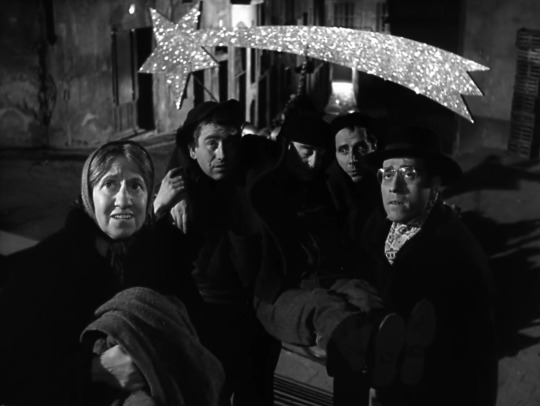


Plácido
Luis García Berlanga. 1961
Church
Carrer de l'Era del Firmat, 1, 08241 Manresa, Barcelona, Spain
See in map
See in imdb
#luis garcía berlanga#placido#cassen#josé luis lópez vázquez#manuel alexandre#elvira quintillá#amelia de la torre#manresa#catalonia#spain#church#bages#star#movie#cinema#film#location#google maps#street view#1961
13 notes
·
View notes
Text
hi! i'm buffy, a brand new indie roleplayer that focuses on writing as canon characters from my favourite fandoms! while my blog is no where near finished yet, i thought i would make a starter/plot call for when i'm ready! while i only write as canon characters, i will happily write against ocs and i'm crossover friendly (within reason). i've never done indie before and so please bare with me as i get to grips with it and learn the ropes.
i'm still setting up my muse directory, but i thought i would compile a list of the muses i write as under the read more.
if you're interested, please like this post and i'll come say hi in your dms!
addams family
gomez addams
morticia addams
buffy the vampire slayer
anya jenkins
buffy summers
cordelia chase
faith lehane
spike
tara maclay
willow rosenberg
charmed
chris halliwell
cole turner
daryl morris
leo wyatt
paige matthews
phoebe halliwell
piper halliwell
prue halliwell
wyatt halliwell
gen v
andre anderson
cate dunlap
emma meyer
jordan li
marie moreau
god of war (2018/ragnarok)
freya
kratos
grey’s anatomy (only up to season 11)
addison montgomery
alex karev
amelia shepherd
april kepner
arizona robbins
callie torres
cristina yang
derek shepherd
izzie stevens
jackson avery
jo wilson
lexie grey
maggie pierce
mark sloan
meredith grey
miranda bailey
owen hunt
stephanie edwards
teddy altman
marvel (mcu)
bruce banner
bucky barnes
carol denvers
clint barton
eddie brock
gamora
jane foster
kate bishop
loki
may parker
natasha romanoff
pepper potts
peter quill
sam wilson
steve rogers
thor
tony stark
valkyrie
wanda maximoff
yelena belova
pirates of the caribbean
elizabeth swann
jack sparrow
will turner
snowpiercer (netflix)
andre layton
melanie cavill
stranger things
jim hopper
joyce byers
twilight
edward cullen
emmett cullen
jacob black
rosalie hale
van helsing (netflix)
axel miller
dracula
ivory
jack van helsing
vanessa helsing
violet van helsing
the boys
annie january
billy butcher
frenchie
hughie campbell
kevin moskowitz
kimiko miyashiro
margaret shaw
mother's milk
the mask of zorro/the legend of zorro
alejandro de la vega
elena de la vega
the mummy
ardeth bay
evelyn o'connell
rick o'connell
the witcher (netflix)
geralt of rivera
jaskier
triss merigold
yennefer of vengerberg
underworld
david
lucian
michael corvin
selene
sonja
#indie rp#indie 1x1#indie roleplay#indie starter call#indie plot call#greys anatomy rp#btvs rp#charmed rp#marvel rp#mcu rp#the witcher rp#stranger things rp#twilight rp#the boys rp
17 notes
·
View notes
Text

Ernestina Poli was born in Ferrara, Italy on 3 April 1879, and she studied for only a few years before making her debut at Bergamo in 1902 as Amelia in Un Ballo in Maschera. She had a huge success and was retained for another dozen performances in Il Trovatore and the then very popular Salvator Rosa. She ended the year at Massa. At this point, despite her success, she retreated from the stage for another year of training, after which she debuted at Messina in Andrea Chenier with the tenor Ruggero Randaccio. On 17 Jan, 1904 she sang Micaela for the only time in her career, again with Randaccio as her stage partner. It was not long before the couple announced that they were to be joined in life, and in the summer of 1904, shortly before a tour to South America, they were married. She immediately changed her stage name to Tina Poli Randaccio, and there are interesting and amusing confusions in some South American reviews during the tour of 1904, in which she is listed as the tenor, he the soprano. Poli was assumed to be his first name and Ruggera, hers.
The tour took the couple to Sao Paolo and Rio de Janeiro where Tina appeared as Mimi, the Trovatore Leonora, Desdemona, Aida, Maddalena di Coigny, Gioconda and Santuzza. He sang in Boheme, Andrea Chenier and Cavalleria Rusticana. The year ended at Sao Paolo with an opera called Cristo alla Festa di Purim, after which she added La Forza del Destino, Ballo in Maschera and Ernani to her assignments in Brazil. The couple traveled with the company to Manaus and Pernambuco, then returned to Europe where Ruggero announced his retirement from the stage. They decided that he would be her manager and coach, and from about this point his name was never seen on a billboard again.
On 2 December 1904 Tina debuted at Milan's Teatro Dal Verme in an opera called Jana with Bergamasco and Schiavazzi conducted by Serafin and from there she went to Oporto where she sang in Aida, Il Trovatore, Don Carlo, Pagliacci, Un Ballo in Maschera and Cavalleria Rusticana. After a short respite, the couple sailed for Mexico, and in September 1905 Tina appeared at the capitol in Les Huguenots (in Italian), Aida, Germania, Un Ballo in Maschera and Giordano's recently produced opera Siberia. The company included Virginia Guerrini, Alice Zeppilli, De Marchi and Magini Coletti, and it is not surprising, given those names, that the tour extended for four months and included visits to Guadalajara.
Turin welcomed her back to Italy when she appeared at the Teatro Vittorio Emanuele as Gioconda in January of 1907. A tour to Bucharest was arranged by Randaccio and on 11 November Tina debuted as Aida in a cast that included De Angelo, Angioletti and Bellat. On the 18th, she sang in Ernani with Angioletti, Titta Ruffo and Torres de Luna. Her season continued into the middle of December with Un Ballo in Maschera and Il Trovatore, both with Ruffo, Les Huguenots, and La Gioconda. A visit was made to Kiev and Odessa, but I have no record of her roles.
Tina debuted at Parma's Teatro Regio on 6 January 1908 in Mascagni's brand new opera, Amica and after singing in Red Roses and Damnation of Faust, she undertook a four month tour of Italy with the new work, under Mascagni's direction. The cities visited included, Firenze, Bologna, Modena, Verona, Treviso, Trieste, Ravenna, Ancona, Cesena and Forli, where she received a thunderous welcome and was hailed as the greatest soprano seen there in a generation. At Livorno she sang in the composer's Le Maschere and Iris and the tour ended at Rome's Teatro Adriano, where Tina sang eleven performances of Amica and several of Le Maschere, the latter with Juanita Caracciolo and Carlo Galeffi.
On 26 December, Tina made a much heralded debut at Venice's Teatro la Fenice as Aida with Ladislava Hotkowska and Henderson. The revival was so well received that a scheduled three performances became six. At Fiume, in April, she sang in Ernani and La Gioconda and in October she returned to the Adriano for Tosca, Aida and the world premiere of Raffaelo,by De Lunghi.
In February 1910 Tina debuted at Madrid's Teatro Real as Gioconda in a cast that included Flora Perini, Giuseppe Taccani and Ruffo, after which she sang ten performances of Aida and six of Loreley at Catania's Masimo Bellini. The spring found the Randaccios back in Brazil, where, at Rio de Janeiro, on 27 May, Tina sang Isolde for the only time in her career, though it was a moderate, if not overwhelming success. At Rio, she also sang in Il Trovatore, La Gioconda, Loreley, Tosca, Aida, and Germania, and at Sao Paolo, she added another new work, Boscaiuola. Tina's tour partners included Anna Gramegna, Krismer, Giraldoni and Viglione-Borghese, and, as had been the case in Mexico, this starry roster resulted in an extended season both in Rio and in Sao Paolo.
The most important moment of her career had arrived. On 17 December 1910 Tina debuted at La Scala as the Siegfried Brunnhilde, with the inimitable Giuseppe Borgatti in the title role. There were a dozen performances, and the production was a complete success. Fanny Anitua was an unforgettable Erda according to contemporary reviews, and the hero and heroine received memorable ovations every evening. Though hers would not be a major career in the most important of all Italian theaters, it continued at intervals for a good number of years, and included several world premiers.
In February 1911 Tina returned to Parma for La Gioconda and then took a well needed break from performing. During the summer, she learned the role of Minnie in La Fanciulla del West, and on 10 September, at Puccini's invitation, she sang the first of thirteen performances at Lucca's Teatro del Giglio with Taccani as Dick Johnson. Her success was enormous, in fact, greater than her predecessor, Eugenia Burzio, who had sung in the Italian premiere earlier in the season. Poli was immediately engaged to repeat the opera at Naples' San Carlo with Martinelli and Viglione-Borghese and at Bari's Teatro Petruzzelli with Corti and Mariano Stabile. After a debut at Palermo's Massimo as Gioconda in March 1912, she sang Minnie at Monte Carlo, again with Martinelli and Viglione-Borghese, and in late May she debuted at the Paris Opera as Minnie in a gala performance with Enrico Caruso.
In November, Tina sang in La Gioconda at Genoa and then prepared for the Scala premiere of Fanciulla. There were many sopranos who had vied for the honor, whose partisans had lobbied intensely for them, and the uncertainty had been a major story in Italian newspapers. Burzio reigned at Scala, but it was not to be. Tina's reputation as Minnie was by now so secure that both Scala's management and the composer agreed that she deserved the honor. On 29 December, before a star studded audience, the Milan theater presented La Fanciulla del West for the first time with Poli Randaccio, Martinelli and Galeffi. Tullio Serafin was on the podium, and the clamor was so enormous that the opera was repeated fourteen times.
Tina repeated Minnie at Monte Carlo in February 1913 with Martinelli and George Baklanov, after which she sang the role at the site of its Italian premiere, the Costanzi of Rome. In the spring there were concerts at Modena in honor of the centenary of Verdi's birth and on 15 December, Tina sang in the world premiere of Mascagni's Parisina at La Scala under the composer's baton. The cast included Luisa Garibaldi, Hipolito Lazaro and Galeffi, and there were twelve performances.
On 10 February 1914 Poli sang in the world premiere of Smareglia's Abisso and on 2 April in the world premiere of Alfano's Ombra di Don Giovanni, both at La Scala. In May she sang in Tosca at Milan's Teatro Carcano with Garbin and Viglione-Borghese and in October Tina participated in one of this century's most important stage debuts, that of Beniamino Gigli as Enzo, at Rovigo, on 15 October. It was the scene of veritable riots; a star had truly been born, and there were thirteen performances. Tina's year ended with Un Ballo in Maschera at Piacenza, a revival shared with the equally celebrated Celestina Boninsegna.
Rome's Costanzi welcomed Tina back as Gioconda, Tosca and Minnie in the winter of 1915, and after Gioconda at Naples and Aida at Firenze, she sailed for South America and her debut at the Teatro Colon of Buenos Aires. On 25 May, Poli debuted as Gioconda in a cast that included Perini, Lazaro, and Riccardo Stracciari. La Prensa referred to her as "a major talent whose voice can send shivers down one's spine, so present and immediate is the reaction". On 6 June she sang Santuzza and on the 17th, she sang in a concert with Caruso, Bernardo de Muro, Mario Sammarco and Lazaro. The season ended with Tosca and had included performances with the company at Cordoba and Rosario, where she sang Tosca and Santuzza, and at Tucuman, where she sang Santuzza.
Tina traveled from Argentina to Santiago, Chile, and on 27 August, she opened the season at the Teatro Municipal in La Fanciulla del West. The work was so well received that an additional performance was added; it was the only opera to be seen as many as four times. She stayed at Santiago for two months, singing Tosca, Aida, Gioconda, Santuzza, the Trovatore Leonora and Maddalena di Coigny and appeared as Aida, Tosca, Gioconda and the Trovatore Leonora at Valparaiso. Tina returned to Buenos Aires in late October where, at the Teatro Coliseo, she sang all of her Chilean roles except for Maddalena, and after a brief rest, she undertook a long tour of the Caribbean Basin. World War I was in its most intense period and the safety of the Western Hemisphere certainly seemed more attractive than the dangers of Europe.
On 29 January 1916 Tina debuted at Havana as Aida, and later sang in Tosca, Il Trovatore, Cavalleria Rusticana, Iris, La Gioconda, Les Huguenots, and La Fanciulla del West. Her tenor partners were Lazaro and Zinoviev; Enrico Roggio carried most of the baritone weight and Amelita Galli-Curci appeared with Poli in Les Huguenots (in Italian). The company stayed at the Cuban capitol for nearly two months, then toured to Cienfuegos, Camaguey, Santiago de Cuba, Mananzas and in the late spring, to Costa Rica.
In November Tina returned to Italy for Tosca at Bologna with Aureliano Pertile and Jose Segura-Tallien and in January 1917 she sang at Milan's Dal Verme in a gala concert, including act 3 of Aida and act 4 of La Gioconda. At La Spezia she sang Aida, and in June Tina debuted at Zurich as Tosca with Gubellini and Sammarco. After singing Santuzza at the Swiss theater, she returned to the Dal Verme for Aida and at Genoa, she sang in La Gioconda with Vita Ferluga, Folco-Bottaro and Galeffi.
Tina decided that the climate in Europe was not what the doctor ordered, and in fact, work was difficult to find for nearly everyone in 1917. Many of Italy's most important theaters were closed, and those that remained open presented very shortened seasons. Havana again beckoned and Tina returned in December for Aida, La Fanciulla del West, Les Huguenots, Tosca, La Gioconda, L'Africaine, La Boheme and a new opera, Doreya. Her colleagues included the tenor, Jose Palet, Edith Mason, Maria Barrientos and the basses, Nicoletti-Korman and Virgilio Lazzari. The tour again included Camaguey, Cienfuegos and Santiago. In mid March 1918, the company moved to San Juan and Ponce for a two month season in Puerto Rico. Poli sang the same roles and added Amelia in Un Ballo in Maschera. In June, at Caracas, Venezuela she sang in Aida, Tosca, Les Huguenots, La Gioconda and Cavalleria Rusticana.
The Great War was over and Tina returned to the safety of a victorious Italy for La Gioconda at Bologna, Milan's Teatro Lirico and Firenze's La Pergola. On 18 December she reappeared in glory for the first of eleven performances of Aida at La Scala. The next few months were spent at Turin with Cavalleria Rusticana and Aida. It was during the revival of Aida that Tancredi Pasero made his absolute opera debut as Il Re, substituting for an indisposed colleague. It is with some pride that the author acknowledges this event, since Pasero's debut has always been listed as at Vicenza in La Sonnambula much later in the year. And with pleasure, I also acknowledge that this information was kindly provided by Robert Tuggle of the Metropolitan Opera Archives.
After La Fanciulla del West at Trieste's Teatro Rossetti, in late November, Tina debuted as Aida at Barcelona's Liceo and in December she completed her engagement as Gioconda. In January 1920 Tina sang thirteen performances of Aida at Trieste's Teatro Verdi with the stellar cast of Giuseppina Zinetti, Miguel Fleta and Carmelo Maugeri. Rome's Costanzi welcomed Poli back with seven performances of La Gioconda and Genoa saw her as Santuzza in March. May was spent at the Fenice of Venice, where Tina sang in Suor Angelica with Elvira Casazza and in Aida. In June, she traveled to London for a debut at Covent Garden in Tosca with Fernand Ansseau and Dinh Ghilly and was very poorly received by both public and press who recoiled from her strong vibrato and melodramatic impersonations. Tina left London after one performance, never to return.
However, on 31 July she was welcomed with an enormous ovation at the Verona Arena when she sang in Aida with Zinetti and Pertile. After La Gioconda at Turin's Teatro Chiarella, Tina returned for a very long season at Barcelona, appearing in Aida, La Gioconda, Un Ballo in Maschera, Lucrezia Borgia, Cavalleria Rusticana and Ernani, as well as in act two of Tosca during a gala benefit. Her reviews were nothing short of magnificent and in Gioconda, she was heralded by several critics as the greatest that the city had ever seen or heard. The Liceo and Tina Poli Randaccio would continue their love affair over several more seasons.
In 1921, Tina appeared at Brescia and Trieste for La Gioconda, Palermo for La Gioconda and La Fanciulla del West, Rome for Aida, the Milan Arena for La Gioconda, Vicenza for La Fanciulla del West with Ismaele Voltolini and Stabile, Venice for La Gioconda and at Parma on 29 December in a stellar revival of the Ponchielli work with Giannina Arangi Lombardi as Laura, Irene Minghini Cattaneo as La Cieca, Voltolini as Enzo, Noto as Barnaba and Bruno Carmassi as Alvise.
The new year found her in revivals of La Fanciulla del West at Naples, Milan's Carcano and at Turin where she was joined by Voltolini and Apollo Granforte. The Dal Verme hosted Tina in Il Trovatore with Zinetti, John O'Sullivan and Benvenuto Franci in October, and after eleven performances of Les Huguenots at Bologna with O'Sullivan, Poli returned to Barcelona for Aida with Aurora Buades and Lazaro, Tosca with Lazaro and Les Huguenots with Cassini and Lazaro.
Tina debuted at Cairo on 27 January 1923 as Gioconda and continued her season as Minnie and Santuzza, after which she repeated all three roles at Alexandria. Santuzza was the role of her return to Milan's Teatro Lirico in May and on 11 August she appeared at Venice's Lido di San Nicola in Aida with the riveting Gabriella Besanzoni. In November, Trieste saw Poli as Gioconda and on the 22nd, she sang in a gala performance of Aida at Rome's Costanzi in honor of the King and Queen of Spain. Zinetti, De Muro and Enrico Molinari completed the stellar cast and the conductor was Mascagni. Tina's year ended at Mantua with four performances of Tosca, after which she appeared at Brescia's Teatro Grande in Loreley. Neapolitan audiences appreciated her Trovatore Leonora and Romans admired her in L'Africaine with Pasini, Giulio Crimi, Molinari and Pasero and in Tosca with Crimi and Stracciari.
In the summer Tina debuted at Vienna as Aida with Maria Gay, Giovanni Zenatello and Viglione-Borghese, a revival that had to be repeated sixteeen times before moving to Kaiserdam, Germany in September. Berlin saw her Santuzza before she returned to Barcelona in November for another daunting season. This time Tina sang in Aida, Les Huguenots, L'Africaine and a new work, Suor Beatrice. Though Tina Poli Randaccio is primarily remembered in Italy as the quintessential Italian dramatic soprano, she had by now appeared in twenty countries, and with the singular exception of England, had been rapturously received in all. There would be a twenty first.
1925 began at Naples with L'Africaine and on 30 January, Tina returned to the Costanzi for La Fanciulla del West with Crimi and Parvis. After further performances of Tosca and Aida at the San Carlo in February, she returned to Rome for Il Trovatore and Aida. The Lido di San Nicola at Venice feted Tina to a serata di gala on 1 August as the prelude to an engagement as Aida at the Fenice, after which she sang in Tosca at Rimini with Pertile and Viglione-Borghese. In October, she returned to Genoa for La Gioconda, and on Christmas Night 1925, at Bari's Teatro Piccinni, she sang Norma for the first time. Though she sang six performances, it was not a great critical success, and she decided to drop plans for several other planned engagements in the role.
Trieste's Teatro Verdi hosted Tina in Abisso and Il Trovatore at the outset of 1926, after which she sang in La Fanciulla del West at Genoa's Carlo Felice, in Aida and a Benefit Concert at Rome's Costanzi, and in Il Trovatore at Naples' San Carlo, the last with Ebe Stignani. Poli had been singing for a quarter century and it had been an enormously intense and successful twenty five years, but Father Time, as he will, began to play his inevitable role. After Naples, it was not until September that Tina again appeared on a stage, when she debuted at the Athens Arena in Aida with Franco Battaglia. And so, her year ended.
La Scala beckoned one more time, and, on 9 March 1927, Tina sang in the world premiere of Guarino's Madame de Challant with Francesco Merli and Carlo Morelli, and with these three performances she said farewell to the theater that had presented her as its first Minnie, and in four world premieres.
Naples again welcomed Tina for Il Trovatore and Aida, and she debuted at Modena's Teatro Comunale in April as Gioconda, and, a week later she unveiled the role of Turandot at the Comunale. At Milan's Carcano she sang in Isabeau and at year's end she returned to Barcelona for the last time, appearing in Aida and La Gioconda, with identical casts, Zinetti, Aroldo Lindi, Granforte and Vela.
In February of 1928 Tina sang in Turandot at the San Carlo and in February, she bade farewell to Naples as Gioconda. In April she returned to Rome, where, at the newly named Teatro Reale, she sang for the last time, when she appeared in Il Trovatore. Her last engagement of 1928 was as Isabeau at Livorno in a revival conducted by Mascagni.
In 1929, Tina sang Gioconda and Santuzza at Milan's Lirico, Turandot at Nice, which is listed in the program as the French premiere of the Puccini opera, Aida at La Spezia and Tosca at Firenze's Teatro Verdi. In 1930, her only Italian engagements were at Genoa where she sang Isabeau, Aida, and Santuzza, after which she sailed to Caracas for a season as Gioconda, Tosca, Maddalena di Coigny, Santuzza and Elena in Mefistofele. There would be no further engagements outside of Italy, and few enough in her homeland though she continued to appear for another six years.
In 1931, she sang Santuzza at Bergamo, Gioconda for Italian Radio both at Rome and Turin, Gioconda in Palermo's Teatro Garibaldi, Nedda at Isola, and Aida at Biela and at Rome's Teatro Adriano. In 1932 she sang in Gioconda at Crema and in Tosca at Milan's Teatro Puccini and at Brescia. 1933 found her again at the Puccini for Isabeau, at the Adriano for Minnie and Aida, and at Milan's Politeama for Santuzza.
In 1934 she returned to Norma, which had played so minor a role in her career, and she sang it at both Monza and the Lido of Pesaro. At Pesaro she also sang Santuzza, a role repeated at Milan's Arena. At year's end she sang Aida at Milan's Nazionale and at the Puccini she sang in La Forza del Destino, a role repeated at Foggia in early 1935. At Foggia she also sang Santuzza. The end came in early 1936, where at Asti and finally at Modena Tina Poli Randaccio sang her opera farwell as Santuzza. The career had encompassed nearly fifty roles, and had presented her on the stages of the World over fifteen hundred times, a monumental parade of memories for nearly two generations of opera goers.
After retiring from the stage, Tina abandoned musical life almost entirely, and died at Milan on 10 February 1956.
#classical music#opera#music history#bel canto#composer#classical composer#aria#classical studies#maestro#chest voice#Tina Poli Randaccio#dramatic soprano#soprano#classical musician#classical musicians#classical voice#classical history#classical#La Scala#Paris Opera#musician#musicians#history of music#historian of music#music education#music theory#diva#prima donna
2 notes
·
View notes
Text
Messina: Dall’8 al 14 luglio il borgo di Castroreale diventa il palcoscenico di "InCastro Festival", l’evento che unisce danza, musica e paesaggio
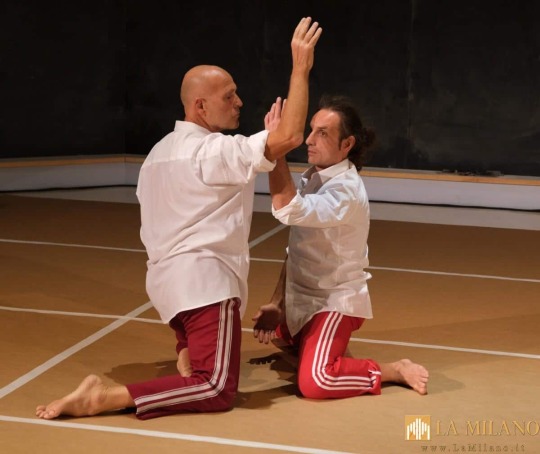
Messina: Dall’8 al 14 luglio il borgo di Castroreale diventa il palcoscenico di "InCastro Festival", l’evento che unisce danza, musica e paesaggio.
In programma due prime nazionali, laboratori, con la partecipazione di importanti esponenti della danza contemporanea a livello internazionale e progetti speciali di site specific pensati appositamente per il Festival.
Il 22 giugno, borgo di Castroreale (Messina), sarà il palcoscenico della quinta edizione di InCastro Festival, in programma dall’ 8 al 14 luglio.
Il Festival multidisciplinare, che unisce danza, musica e paesaggio, con la direzione artistica di Giorgia Di Giovanni e Pierfrancesco Mucari e la direzione organizzativa di Danila Blasi, sostenuto dal Ministero della Cultura, Comune di Castroreale e Unione dei Comuni – Valle del Patri.
Il tema dell’edizione 2023 è l’Abilità nell’Abitare, a conferma della vocazione dell’evento al coinvolgimento diffuso di questo borgo e della sua comunità.
Sono in programma due prime nazionali: domenica 9 luglio alle 20.30 con Tre Stanze di Scenario Pubblico Compagnia Zappalà, in scena in Piazza delle Aquile e martedì 11 luglio, alle ore 19.30, in Piazza della Candelora con Two out of three di Zerogrammi.
Sono anche previsti laboratori e residenze, con la partecipazione di importanti esponenti della danza contemporanea a livello internazionale e alcuni progetti speciali site specific pensati appositamente per InCastro: Humus Saliens, Ascoltare l’abitare, Sedentario, In-Itinere e Sullivan- Primostudio. Tra i nomi degli ospiti Virgilio Sieni, Manfredi Perego, Giuseppe Muscarello, Balletto Civile, MK.
Il programma dei giorni del Festival:
Ad inaugurare il Festival InCastro, sabato 8 luglio alle ore 17.00 sarà la performance multimediale Giulio di e con Giuseppe Muscarello, una produzione PinDoc, ospitata nella Torre Federico II: in un connubio tra letteratura, movimento e arte visiva la narrazione scorre per successione cronologica di avvenimenti e vicende ambientate dentro casa. Lo spettacolo sarà replicato alle ore 17:45, 18:30 e 19:15.
Alle ore 20.00 e alle ore 21.30 la Chiesa SS. Salvatore ospiterà Danza cieca di Virgilio Sieni. Lo stesso Sieni e il danzatore non vedente Giuseppe Comuniello sono protagonisti di un duetto sulla tattilità che trasforma il corpo in un atlante inesauribile di luoghi democratici. La performance, con musica elettronica eseguita dal vivo da Spartaco Cortesi, si basa sullo spazio aptico tra i due interpreti e sull’energia che si crea intorno a loro attraverso i movimenti.
Domenica 9 luglio alle ore 20.30 Piazza delle Aquile ospiterà Amelia, una produzione Zerogrammi, di e con Priscilla Pizziol ed Edoardo Sgambato.
Amelia è un elogio alla fragilità, un invito ad immergersi nella dimensione del ricordo e a lasciarsi attraversare dal senso di vuoto che deriva dalla sua perdita. Due corpi abitano una sedia sola, condividono la propria solitudine rievocando vissuti, mondi e tempi passati. Il (non) racconto prosegue per frammenti confusi, un flusso costante di memorie e non memorie.
A seguire, alle ore 21.30, è in programma la prima nazione di Tre Stanze di e con Maud de la Purification e musiche dal vivo eseguite da Cristiano Calcagnile, Gianni Mimmo e Pierfrancesco Mucari (Produzione Scenario Pubblico/ Compagnia Zappalà Danza). Lo spettacolo è caratterizzato da tre momenti:
Impregnation. Entrare in un luogo, un’idea, frequentare una contraddizione.
Un processo di assorbimento.
Obsession. Il vicolo chiuso, dead row. La frequentazione del limite perchè “Je ne fais pas comme je veux, je fais comme je peux”.
Hallucination. Trascendere il limite, non infrangerlo. La sublimazione dell’idea è l’arte.
Lunedì 10 luglio alle ore 19.00 Piazza Pertini ospiterà Humus Saliens (produzione IterCulture), un progetto speciale site-specific realizzato per InCastro Festival. La performance di Erin B. Mee, docente alla Tisch School, è un percorso di formazione con giovani coreografi selezionati da Viagrande Studios.
Sempre nella location di Piazza Pertini, alle ore 20.30 è in programma Paesaggio d’interni, una produzione di Balletto Civile, di Michela Lucenti, con Emanuela Serra, Alessandro Pallecchi, Giulia Spattini e Francesco Gabrielli.
In questa performance site specific il palco è la strada, la scena un interno, un tavolo e due sedie, come un'isola a cui approdare. Corpi a confronto in partiture ritmiche danzate. Un caleidoscopio di immagini a cui Balletto Civile si ispira per indagare la relazione emotiva tra uomini e donne.
Di seguito le informazioni sulla residenza, sui laboratori in programma in vari luoghi all’aperto di Castroreale (per informazioni e iscrizioni [email protected] e +39 349 838 8723 +39 347 104 4290):
Dall’11 al 14 luglio è in programma “IN-ITINERE”, la residenza artistica creativa condotta da Emanuela Serra e Alessandro Pallecchi, alla quale prendono parte 11 fra danzatori, attori professionisti e giovani danzatori del territorio. Un percorso formativo e creativo, con l’obiettivo di ridare priorità all’urgenza fisica risvegliando l’intelligenza dell’ascolto per ritrovare una lucida presenza scenica e stimolare il nostro immaginario fisico. Il processo creativo verrà strutturato con l’obiettivo di fornire ai partecipanti un linguaggio comune per entrare in contatto con la metodologia creativa di Balletto Civile.
Il risultato della residenza sarà aperto al pubblico attraverso una performance itinerante creata ad-hoc in un percorso tra i luoghi di Castroreale, con l’intervento della Storica Banda Musicale M° Settimo Sardo.
Le attività laboratoriali partiranno sabato 8 (ore 15:30-17:30) e domenica 9 luglio (ore 9:30-11:30), con “Mi InCastro”, che prevede attività itineranti di danza urbana a cura di Danilo Smedile: attraverso l’esplorazione del territorio e del movimento, il laboratorio vuole offrire l’opportunità di sperimentare e approfondire la contaminazione tra corpo, danza, architettura e paesaggio. Sviluppare la capacità di agire in contesti e luoghi diversi, per aprire nuovi canali utili alla relazione con lo spazio, il tempo e gli altri corpi.
Domenica 9 luglio dalle 15.30 alle 17.30 è in programma “Dimora”, di Mariana Cerino Calazans: un laboratorio aperto a tutti incentrato sulla figura di Penelope – la mitica regina di Itaca – e sulla sua lunga attesa. Come simbolo di eterna fedeltà e costanza, Penelope diventa il punto di partenza per offrire alle partecipanti e ai partecipanti un tempo dilatato per osservare, distrarsi, concentrarsi e stabilire collettivamente una pratica condivisa, un rituale dell’atto di aspettare.
Lunedì 10 luglio, dalle 9:30 alle 11:30 si svolgerà il workshop “Linguaggio MoDem”, un progetto di Roberto Zappalà tenuto da Maud de la Purification, danzatrice e assistente Compagnia Zappalà Danza.
Lo spunto di lavoro parte da tre testi redatti dallo stesso coreografo “Corpo devoto”, “Corpo etico” e “Corpo istintivo”, ora raccolti in un unico testo “Omnia Corpora” nel quale Roberto Zappalà esplicita considerazioni e riflessioni in relazione al suo approccio alla coreografia. La sezione più fisica del laboratorio tenuto da Maud de la Purification consiste nel potenziare il fisico e la mente attraverso un lavoro muscolare intenso.
Dalle 15.00 alle 18.00 Giorgia Gasparetto e Vitus Denifl saranno i protagonisti del laboratorio di condivisione del processo creativo di “Two out of three”. Un’opportunità per aprire la ricerca e approfondire lo studio sui concetti di integrazione, di relazione tra corpo e spazio/ambiente, e tra gesto e suono. Si esploreranno i mondi della danza, del movimento e della musica dal vivo, indagandone i legami attraverso giochi che hanno accompagnato la nostra creazione.
Martedì 11 luglio dalle 15:00 alle 18:30 si svolgerà il laboratorio “Permeabile” condotto dal Collettivo Macula (Edoardo Sgambato e Priscilla Pizziol). Questa attività si rivolge a tutti coloro che desiderano approfondire quegli strumenti che permettono al nostro corpo di accedere ad uno stato di apertura percettiva. Sarà guidata un'esplorazione fisico-anatomica ispirata dallo studio della Contact Improvisation, del metodo Feldenkrais, così come del partnering e del floorwork.
Martedì 11 e mercoledì 12 luglio dalle 9:00 alle 11:00 si svolgerà “Invasione Danzata”, un incontro pratico con Balletto Civile, condotto da Emanuela Serra e Alessandro Pallecchi: un laboratorio a cielo aperto in cui si sperimenta l’azione danzata in una situazione site-specific. Attraverso lo studio di elementi semplici (impulso/reazione,
bilanciamento dello spazio, partitura a sincrono e ritmica,
uso dei livelli) si svilupperà un linguaggio comune attraverso costruire incontri tra corpi quanto più possibile densi e autentici. I partecipanti al laboratorio potranno seguire da uditori la creazione della performance IN-ITINERE che verrà costruita nei giorni a seguire.
Infine, mercoledì 12 e giovedì 13 luglio dalle 15.00 alle 17.30 e venerdì 14 luglio dalle 9.30 alle 11.30 Manfredi Perego e Chiara Montalbani condurranno “Tecnica della metamorfosi”, un contenitore d’esercitazioni dove si incontrano gli insegnamenti acquisiti negli anni, la loro ri-codificazione ove necessario e l’elaborazione di concetti nuovi applicabili all’arte coreutica. Tali esercitazioni includono studi di tecnica contemporanea, movement research, lavoro con oggetti, tecnica dell’improvvisazione....
#notizie #news #breakingnews #cronaca #politica #eventi #sport #moda
Read the full article
0 notes
Photo

Recommendation of the week: Plácido (1961)
Dir.: Luis García Berlanga
Cast: Cassen, José Luis López Vázquez, Elvira Quintilla, Amelia de la Torre, Julia Caba Alba.
Genre: Comedy
Plot: In a small spanish town, a group of old ladies decide to celebrate Christmas Eve with a “Sit a poor man at your table” dinner: each wealthy household of the town will have a homeless person dining with them that night. The celebrations also include a parade, and in it we find Plácido, the humble owner of a three-wheeler, whose family is forced to live in a public lavatory because of the lack of money to pay the rent, and who has to pay the second bill of his vehicle before midnight or else he will lose it.
Filmphilics score: 8'5/10
Merry Christmas 🎅
#plácido#placido#luis garcía berlanga#cassen#jose luis lopez vazquez#elvira quintanilla#amelia de la torre#julia caba alba#comedy#comedy film#comedy movie#christmas films#christmas movies#christmas cinema#cult cinema#cult film#cult movies#movie#film
5 notes
·
View notes
Photo




6.08.2021
1 note
·
View note
Text
Amelia y los Folch históricos
Cuando estuve revisando información para el post del tema de Amelia y Enriqueta Martí, pues vi que la prisión donde murió Enriqueta, la cárcel Reina Amalia, estuvo en el lugar que es actualmente el parque Josep María Folch i Torres. Y me puse a indagar sobre esa persona Sobre Folch i Torres era un escritor barcelonés nacido en 1880. Si os interesa aquí adjunto un retrato de él que dibujo Pablo Picasso.
Y después me puse a buscar cosas de él o de algún familiar y descubrí el árbol genealógico de la familia Folch i Torres y algunas cosas más.


Los padres de Josep se llamaban Lluís Folch i Brossa y Lluïsa Torres i Llinàs. Por lo que he mirado, Lluis Folch i Brossa tenía un hermano llamado Josep María, y por lo que he encontrado una página de internet su padre llamaba Bernat Folch i Franquès, aunque se sabe muy poco de él. Lluís Folch i Brossa al parecer era un anticuario o un ebanista industrial de muebles de lujo o algo así.Y aunque este "registrado" que el padre de Lluís, pues yo me he montado un headcanon de que la familia Folch i Torres son parientes cercanos de Amelia, porque Lluís Folch i Brossa es hijo de Pere.
Si seguimos con la línea de que Lluis es hijo de Pere Folch, a lo mejor podríamos buscar una explicación de que tras lo sucedido con el atentado contra el rey en 1881, sus hijos, para desvincularse a ellos y a su familia de lo que había hecho su padre, le "borraran" de la familia, diciendo que su padre era ese tal Bernat Folch i Franquès.

Por lo que he podido encontrar los hermanos Folch i Torres eran intelectuales y escribian y trabajaban en varios ámbitos de literatura y arte, principalmente, así que por lo que sabemos ninguno de ellos se dedicó a cosas de empresarios ni nada de fábricas. Bueno no sabemos exactamente que hacia Mercè, pero supongo que por el ambiente que tenía en casa ella tenía interés en literatura o arte.
Supongo que la faceta empresarial de la familia la tendría algunos de sus hijos o descendientes u otras ramas de la familia o familiares cercanos como Enric, Pere y Amelia.
Probablemente no hayan tenido necesidad o verdadero interés por cosas de negocios y tenían mayores intereses en cosas de literatura, y fueron decidiendo dedicarse a eso, porque otros de la familia ya se han estado dedicando a trabajar en cosas de negocios. Para empezar su padre Lluís, que es un empresario, y probablemente haya ganado bastante dinero por si mismo, y sus hijos para la década de 1880 o están por nacer o son niños pequeños.
Y si suponemos que Pere es abuelo de los hermanos Folch i Torres, pues la otra parte de la familia se ocupa del tema de los negocios y la fábrica, aunque a parte de ser empresaria, también se dedique a estudiar cosas de literatura e historia, a lo mejor si tienen un contacto cercano con la familia de su primo, podría ser que Amelia les haya influenciado en lo de interesarse en la literatura y el arte.

Otras curiosidades en relación a los Folch, es que hay dos lugares que se llaman Can Folch, el primero es una casa que tenían los Folch i Torres en un pueblo de la provincia de Barcelona, Palau-solità i Plegamans, que aparece en varias de las fotos de la familia. Si os interesan, las he archivado en una carpeta de Google Drive, cuyo enlace encontraréis al final de esta publicación.

El segundo es una fábrica que se ubicaba en la actual zona de la Villa Olímpica de la ciudad de Barcelona, y que se abrió en 1882. Actualmente de la fábrica sólo queda una de las chimeneas.



La fábrica de Can Folch era de harinas, sémola, hielo y alcohol, así que creo que ya sé que contenía la lista que le dio Salvador a Amelia sobre en cuales son las mejores cosas en las que invertir después de lo que pasó en el capítulo de Tiempo de esclavos.
Can Folch

Uno de las imágenes que hay en la carpeta de Drive que he adjuntado, es un grabado de una de la sala de máquinas de Can Folch en 1883. Luego hay otra otra imagen que he encontrado, en la que hacen referencia a una zona de la fábrica de hielo de los hermanos Folch en 1919. Y otras son unas fotografías de los restos de la fábrica en 1987, antes y después de ser demolida para renodelar la zona para adaptarla a la Villa Olímpica para los Juegos Olímpicos de Barcelona de 1992.

*Amelia de visita por la Barcelona del siglo XXI, mirando a ver si queda algo en pie, su casa o algo y se planta en Villa Olímpica y ve la chimenea de su fábrica en medio de esos pisos*
Amelia: Bueno al menos han dejado la chimenea como recuerdo.
Carpeta de fotos
#el ministerio del tiempo#emdt#mdt#siglo xix#siglo xx#barcelona#fundació folch i torres#can folch#palau-solità i plegamans#amelia folch#josep maria folch i torres#enric folch#headcanons#pere folch#Lluís Folch i Brossa#Lluïsa Torres i Llinàs#Manuel Folch i Torres#Lluís Folch i Torres#Mercè Folch i Torres#Ignasi Folch i Torres#Joaquim Folch i Torres#Maria Luandra Vilargunté#Isabel Camarasa Serra#Maria Camarasa Serra#Orsina Baget Tarrés#Antònia Sancristòfol Arboix#Frederic León Luque#Lluís Folch i Camarasa#Jordi Folch i Luandra#Maria Rosa Folch i Camarasa
20 notes
·
View notes
Text
Shalim Ortiz
Amaury Nolasco, Adam Kaufman (5’11” range), Julie Benz, Leeann Tweeden, Roselyn Sanchez, Poppy Montgomery, Charytin & Eric Winter


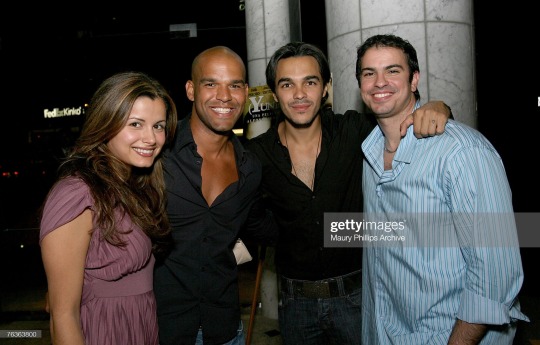
Ana Ortiz
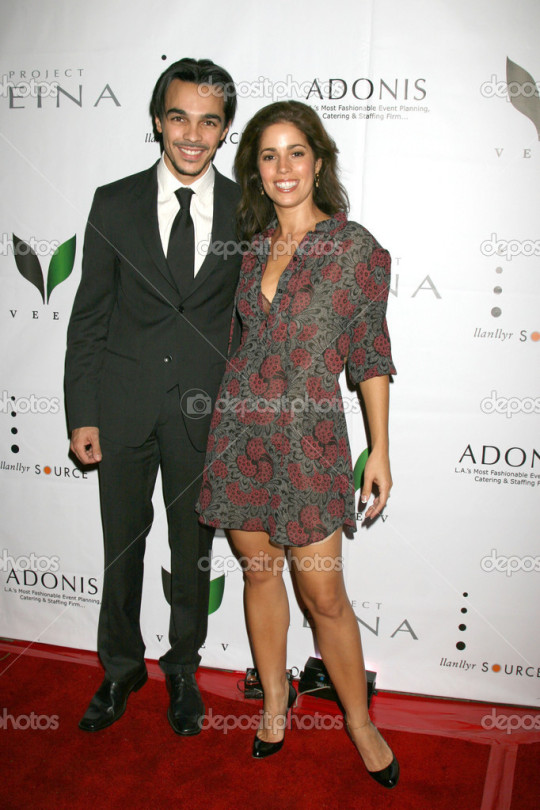
Bryan Craig


Carmen Electra


Christopher Masterson and Brooke Burns
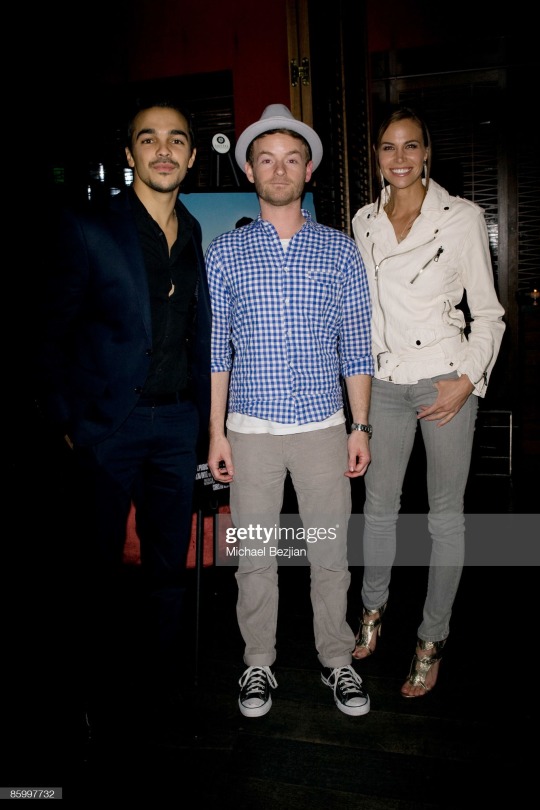
Denise Vasi



Diego Boneta

Eric Winter


Eva Longoria

Jamie Lynn Sigler
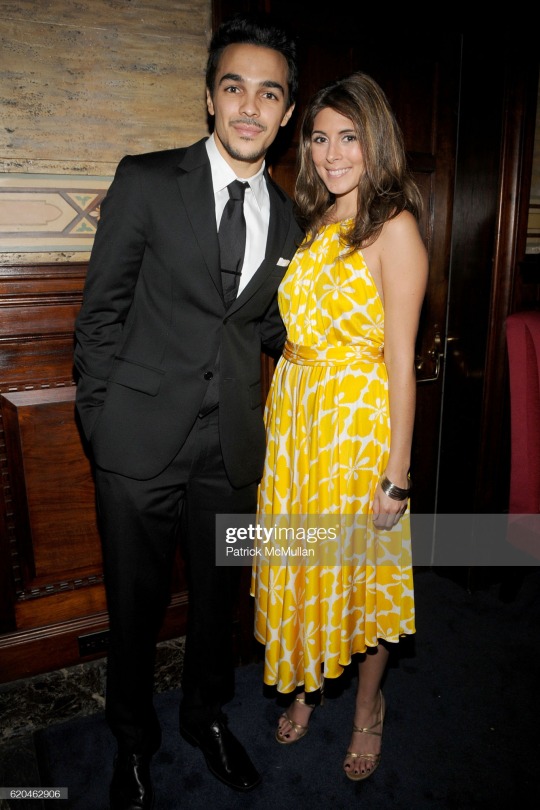
Kuno Becker


Wilmer Valderrama
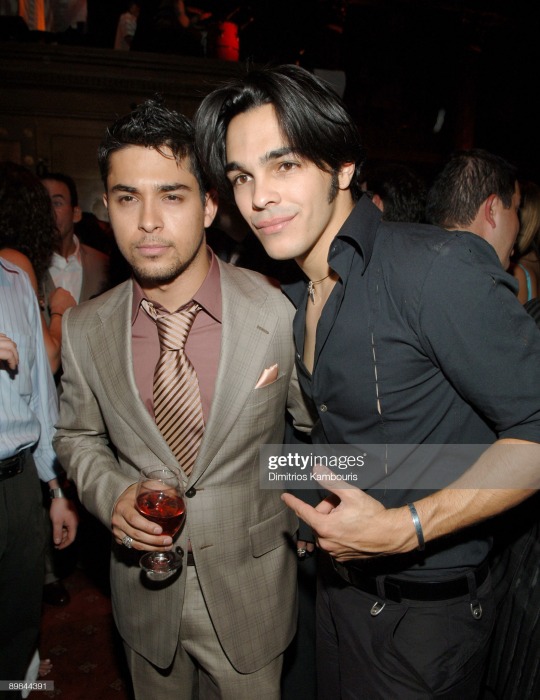
Zoe Saldana



Adrian Di Monte (Listed 179cm)

Alexander Elin Goyco (5'10" tops)


Alfredo Ahnert (Listed 5’9”)

Amelia Vega (Listed 6'0")


Bryan Craig, Denyse Tontz, Damien Bichir, Roselyn Sánchez & Lincoln Younes (Listed 6’1”)



Cesar Camacho (Listed 5’10”)

Davi Santos (Listed 6'0")

Emilio Estefan (5'10" tops)

Fabian Rios (Listed 182cm)



Fernando Carillo (5'11" tops)

Gaby Espino & Luis Ernesto Franco (Both Listed 5’9”)








HANNAH BROWN & LINCOLN YOUNES (Listed 6'1")

Héctor Aníbal (Listed 6’0”), Carlos de la Mota (Listed 187cm) & José Guillermo Cortines (Listed 5’11”)

Jon Secada (5'8.5" tops)

Lili Estefan (Listed 5’9”)

Lincoln Palomeque (Listed 177cm)

Lincoln Younes (Listed 6'1")
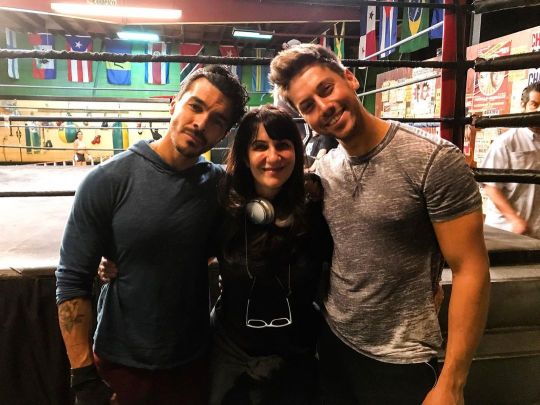

Manolo Cardona (Listed 6’-6’1”)

Oscar Torre (Listed 176cm)

Rafael Amaya (Listed 6’2”)

Raul Mendes (Listed 5’9”)

Ricky Josué (Listed 5'7")

Seniesa Estrada (Listed 5’2”) & Ilia Calderon (Listed 5’8”)

Sharinna Ortiz (Listed 5'6")

Shary Allan (Listed 167cm)

Shirly Brener (5'4" tops)

2 notes
·
View notes
Text
Conozca los postulados a rectores del CNE (+Listado)

Los nombre de los 75 postulados y postuladas a rectores y rectoras del Consejo Nacional Electoral (CNE) que pasaron la etapa de evaluación realizada por el Comité de Postulaciones Electorales, fueron dados a conocer por el Comité de Postulaciones Electorales de la Asamblea Nacional (AN).
El Comité informó que de las 75 postulaciones que superaron esta etapa, 47 pertenecen a la sociedad civil, 10 a las universidades y 18 al Poder Ciudadano, cumpliendo así con el artículo 26 de la Ley Orgánica del Poder Electoral.
A continuación el listado
Candidatos postulados por las facultades de Ciencia Jurídicas y Políticas de las Universidades:
5.424.288 HAROLD ELISEO ALBORNOZ TORREALBA
8.789.248 CARMEN ALVAREZ CABEZA
9.363.630 ANGEL ZULEY ANTUNEZ PEREZ
13.748.998 WILSON GOMEZ GUEVARA
4.767.120 ALEJANDRO JOSE UGARTE SPERANDIO
7.726.798 PEDRO ALBERTO ISEA GONZALEZ
7.275.591 JOSE RAMON MUÑOZ MONTILLA
11.469.855 LILIMAR JOSEFINA ROJAS DAVILA
4.793.004 LERMIT JOSE ROSELL PUCHE
12.630.557 MICHELY ALEXANDRA VIVAS CHACON
Candidatos postulados por el Poder Ciudadano:
4.596.507 FRANCISCO GUSTAVO AMONI VELASQUEZ
10.815.608 ODALIS YANETTE ARTEAGA PEÑA
9.683.971 ALFREDO GERMAN BAPTISTA OVIEDO
9.652.930 REINALDO ENRIQUE CARVALLO MACHADO
7.959.098 JULIO ANTONIO DUNO OLIVEROS
11.199.471 MANUEL JOSE ESCAURIZA SANCHEZ
6.730.853 WILLIAM JOSE FERNANDEZ RANGEL
12.061.089 AURA ROSA HERNANDEZ MORENO
6.492.846 CELESTE JOSEFINA LIENDO LIENDO
11.785.927 DOMINGO MEDINA GUTIERREZ
14.316.687 ANTONIO JOSE MENESES RODRIGUEZ
18.094.872 LEONEL ENRIQUE PARICA HERNANDEZ
10.948.762 ESTHELA MARIA RINCONES
17.799.433 EBENEZER DAVID RIVERA BRAZAO
9.640.547 SHEILA YUBIRY ROMERO GONZALEZ
6.836.622 CARMEN ALIDA VIGIL BENCOMO
6.297.704 GUSTAVO ADOLFO VIZCAINO GIL
11.957.784 CARLOS EDUARDO ZAMBRANO GELVES
Postulados por las Organizaciones de la Sociedad:
14.017.686 HELEN DAYANA AGUIAR HERNANDEZ
14.306.972 AMELIA ESTHER ALTER PINO
7.659.795 ELVIS HIDROBO AMOROSO
4.506.504 LEON ANTONIO ARISMENDI ANUEL
11.159.050 ESTEBAN STEVE ARVELO RUIZ
4.077.208 SAUL DE JESUS BERNAL PEÑA
4.248.113 OSCAR BRAULIO BRAVO GUARAMATO
10.886.311 GRISELDA VANITI COLINA HIBIRMA
11.691.429 TANIA DE AMELIO CARDIET
5.962.704 JUAN CARLOS DEL PINO
3.187.497 DAVID DELGADO ITURRIZA
13.339.266 ANA PAULA DINIZ SANTOS
5.217.642 WUILLIAM FERNANDEZ FUENMAYOR
5.524.394 CARMEN LUCRECIA GONZALEZ CORONEL
12.731.271 EUGENIO GONZALEZ MARTINEZ
4.132.092 ALFONSO GRANADILLO MALAVE
17.375.543 JHONNY ALEXIS GUERRERO CASTILLO
12.248.860 GABRIEL GREGORIO GUERRERO GIL
8.967.366 DICHELIS JOSEFINA GUEVARA
1.567.695 JOSE ALONSO GUEVARA GUERRA
7.048.576 JOSE LUIS GUTIERREZ PARRA
3.180.027 LUIS ENRIQUE LANDER LARRALDE
14.533.009 CIRO VLADIMIR LEON
16.288.462 AMANDA CORINA LUCCI ROYE
7.528.966 NOEL YORELBE MABARES
7.761.966 FRANCISCO JOSE MARTINEZ GARCIA
7.950.191 LADYS COROMOTO MEJIAS ROJAS
3.750.465 BERNARDO MENDEZ ACOSTA
3.552.194 CELIZ RAMON MENDOZA
4.771.335 LEONARDO ENRIQUE MORALES POLEO
6.094.547 JOEL GUSTAVO OLOYOLA CARRASQUEL
4.505.818 JOSE ENRIQUE PARRA MAURERA
3.927.576 EURO DE JESUS PARRA MONTIEL
4.323.185 CONRADO RAMON PEREZ BRICEÑO
12.095.154 ANIBAL JOSE PERNIA CONTRERAS
6.560.218 ROBERTO ANTONIO PICON HERRERA
10.719.241 CARLOS ENRIQUE QUINTERO CUEVAS
4.271.137 TULIO ALFONSO RAMIREZ CUICAS
14.143.740 ROSMERY GERALDINE RAMIREZ DIAZ
10.451.000 ROBINSON RIVAS SUAREZ
11.657.235 AQUILINO ANTONIO RODRIGUEZ GARCIA
13.970.262 DENNY ALEXANDER RUIZ FARFAN
12.839.942 YVAN JOSE SALCEDO UZCATEGUI
12.950.777 MAYGRET DEL MILAGRO SANCHEZ BARRERA
6.671.155 JHOVANY SEVILLA GASPAR
13.875.503 JUAN JOSE TORRES LARA
12.014.259 JOE PONCE UZCATEGUI GONZALEZ
Cabe destacar que este miércoles, el vicepresidente del Comité de Postulaciones Electorales, diputado José Gregorio Correa, precisó que la lista con los nombres de los venezolanos seleccionados como elegibles se podrá impugnar durante 6 días, quienes tendrán ese mismo tiempo para hacer los descargos de las objeciones.
El Consejo Nacional Electoral está integrado por cinco (5) miembros, denominados Rectoras o Rectores Electorales, cuyo periodo de ejercicio en sus funciones es de siete (7) años. Son designadas o designados por la Asamblea Nacional con el voto favorable de las dos terceras partes de sus integrantes y podrán ser reelegidas o reelegidos en sus cargos hasta un máximo de dos (2) periodos adicionales, previa evaluación de su gestión por parte de la Asamblea Nacional.
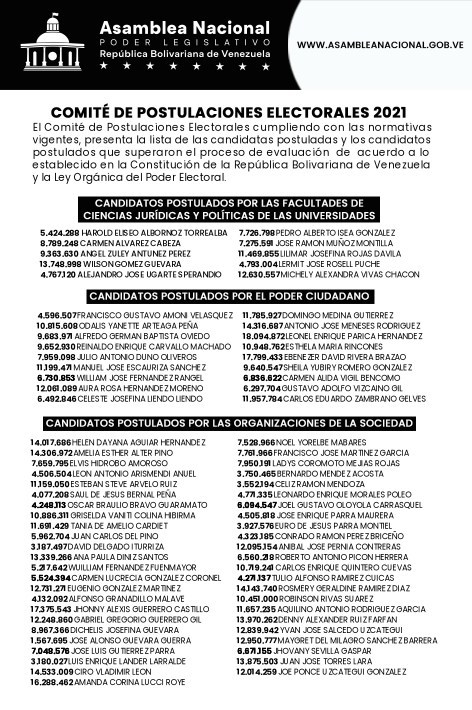
2 notes
·
View notes
Photo


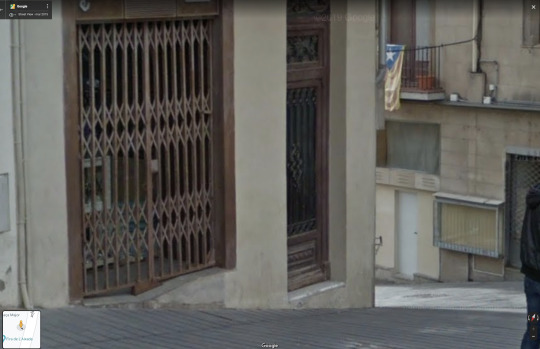


Plácido
Luis García Berlanga. 1961
House
C. de Monistrolet, 4, 08241 Manresa, Barcelona, Spain
See in map
See in imdb
#luis garcía berlanga#placido#luis ciges#star#christmas#spain#cassen#elvira quintillá#josé luis lópez vázquez#amelia de la torre#laura granados#xan das bolas#manresa#bages#catalonia#movie#cinema#film#location#google maps#street view#1961
9 notes
·
View notes
Text
Se realiza en NUQLEO consulta nacional sobre biodiversidad

Con el fin de hacer conciencia y escuchar la voz de la población joven en relación con temas medioambientales, se llevó a cabo en las instalaciones de Nuqleo la Consulta Nacional Jóvenes de México por la Biodiversidad, ejercicio en el que la Secretaría de la Juventud (SEJUVE), es coorganizadora. Durante el inicio de los trabajos, el secretario de la SEJUVE, Rodrigo Ruiz Ballesteros, resaltó que la agenda verde es también la agenda de los jóvenes. “Estoy seguro que a través de este ejercicio mandaremos un claro mensaje: que en Querétaro la biodiversidad es una prioridad”, afirmó.

El funcionario planteó que la pérdida de la biodiversidad se ubica como uno de los mayores retos a nivel mundial, pues de 1970 a la fecha ha desaparecido más de 60% de la población de especies en todo el planeta. “Este debe ser uno de los temas de mayor atención para México, pues somos uno de los 17 países con mayor biodiversidad a nivel mundial”, dijo. Ruiz Ballesteros consideró importante que desde la juventud se posicione esta agenda y que la misma se traduzca en redes de colaboración y en estrategias de acción. En este sentido, recordó que desde la SEJUVE se busca posicionar a Nuqleo como un espacio de colaboración y de innovación abierta, desde el cual se pueda potenciar la voz y propuestas de todos los jóvenes.

Durante la consulta se llevó a cabo un ejercicio de encuesta y mesas de trabajo en las que participaron las secretarías de Desarrollo Sustentable (SEDESU) y de Desarrollo Agropecuario (SEDEA). Ricardo Torres, subsecretario de Medio Ambiente de la SEDESU, destacó que las nuevas generaciones tienen en sus manos el poder de hacer un cambio y de tomar decisiones con conciencia ante los problemas ambientales. “A esta generación le toca hacer un esfuerzo para alcanzar la meta de descarbonización. En Querétaro se han fortalecido las áreas naturales protegidas, se cuenta con fondos estatales enfocados al medio ambiente y se preserva la reserva de la biósfera de la Sierra”, sostuvo. En su oportunidad, Edgar Muñoz, representante de la SEDEA, refirió que desde esta dependencia se promueve una ganadería sustentable que haga un uso racional de los recursos naturales. Durante el evento se contó con la presencia de Amelia Arreguín Prado, representante de la Red Global de Jóvenes por la Biodiversidad.
#QuerétaroResponsable#QroResponsable#Querétaro#Nuqleo#Nacional#Biodiversidad#Sejuve#RodrigoRuíz#Planeta#Sedesu#MDelPrete
1 note
·
View note
Text
Elite 4 members:-
Name: Elaine Smith
Age: 21
Date of birth: 17th February
Relationship status: single
Languages spoken: English, chinese, french, italian, hindi etc..
Eye colour: black
Skin colour: white
Hair colour:brownish black
Hair style: straight wavy
Typical clothing: black colored costumes mostly
Likes: Dancing, Fighting, Archery, Designing, annoying her friends, sleep, watching k drama etc...
Dislikes: anyone who hurt her and her friends
Education: student at mingde university
Fears: patriarchical father
Parents: William Smith And Amelia Smith
Siblings: Elira and Eliza
Friends: Dove Cameron, Sophia Carson
Celebrity who has crush on her:- Alan Walker
Best friend(s): Elite 4
Important friends:F4
Love interest:- no
Occupation: Dancer, Designer
Awards:- world Famous youngest Dancer, worn awards for dancing like National Dance Awards, Helpmann Awards, Selma Jeanne Cohen Award, Gertrude Lippincott Award, De la Torre Bueno Prize, The Dance Awards etc...


Current home: Elite 4 house
Pets: Diamond
Talents: Fighting, Dancing, weapons
Favourite colours: black
0 notes
Text
Aquí una pequeña escena escrita por mi
Jaula
(Amelia tiene una semana encerrada en su cuarto, sin poder salir ni relacionarse con nadie, ya está empezando a alucinar.)
Amelia: Uno, dos, tres, cuatro, cinco, seis, siete…. Siete días, mañana ocho, OCHO malditos días, casi ocho.
Coco: Solo ocho días y te pones así, Gandhi duro seis años en prisión y no hizo tanto show
(Amelia se gira hacia la voz)
Amelia: No es lo mismo.
Coco: Claro que no. Él no se merecía el encierro tu sí.
(comento entre risas)
Amelia: ¿Porque me lo merezco? porque tengo la culpa de que mi cuerpo sea débil? No es mi culpa.
(Grito entre lágrimas)
Coco: ¿Y de quien es la culpa entonces?
Amelia: Del gobierno obvio, si no hubieran esparcido el virus ese, todo sería diferente. El día que salga de este cuarto, juro que destruiré todas las torres 5G, sere la salvadora del mundo.
Coco: Una lunática mas en el mundo dirás. Lo único que tienes que hacer ahora es averiguar como vas a salir de este cuarto con vida. No creo que tu escuálido cuerpo soporte el virus una semana más.
Amelia: Y que mas da si no lo soporta, igual afuera no hay nada solo muerte y esas estúpidas mascarillas que no te permiten respirar bien. Aparte de eso solo está la soledad ¡Y el encierro, oh! El maldito encierro. (dice exasperada)
Coco: No es para tanto. ( le resta importancia)
Amelia: Solo lo dices por qué has vivido encerrado toda tu vida, has vivido a través de los ojos de los demás, ¡no lo entiendes! ( empieza a recorrer la habitación inquieta)
Coco: Al contrario, e vivido en cada oportunidad en la que te distraes y olvidas tomar tus pastillas, tal vez no como un ser físico, pero si como tu realidad constante.
(Tocan la puerta, Amelia se gira hacia esta ya más tranquila, se recuesta de esta y procede a hablar)
Amelia: ¿Sí?
(se escucha la voz de un niño a través de la puerta)
Niño: Dice mama que si te tomaste las pastillas.
Amelia: Si. Ya lo hice.
(se escuchan los pasos del niño mientras se aleja por el pasillo, Amelia se dirige hacia la mesita agarra la tableta de Clorpromazina y se la toma)
0 notes
Text
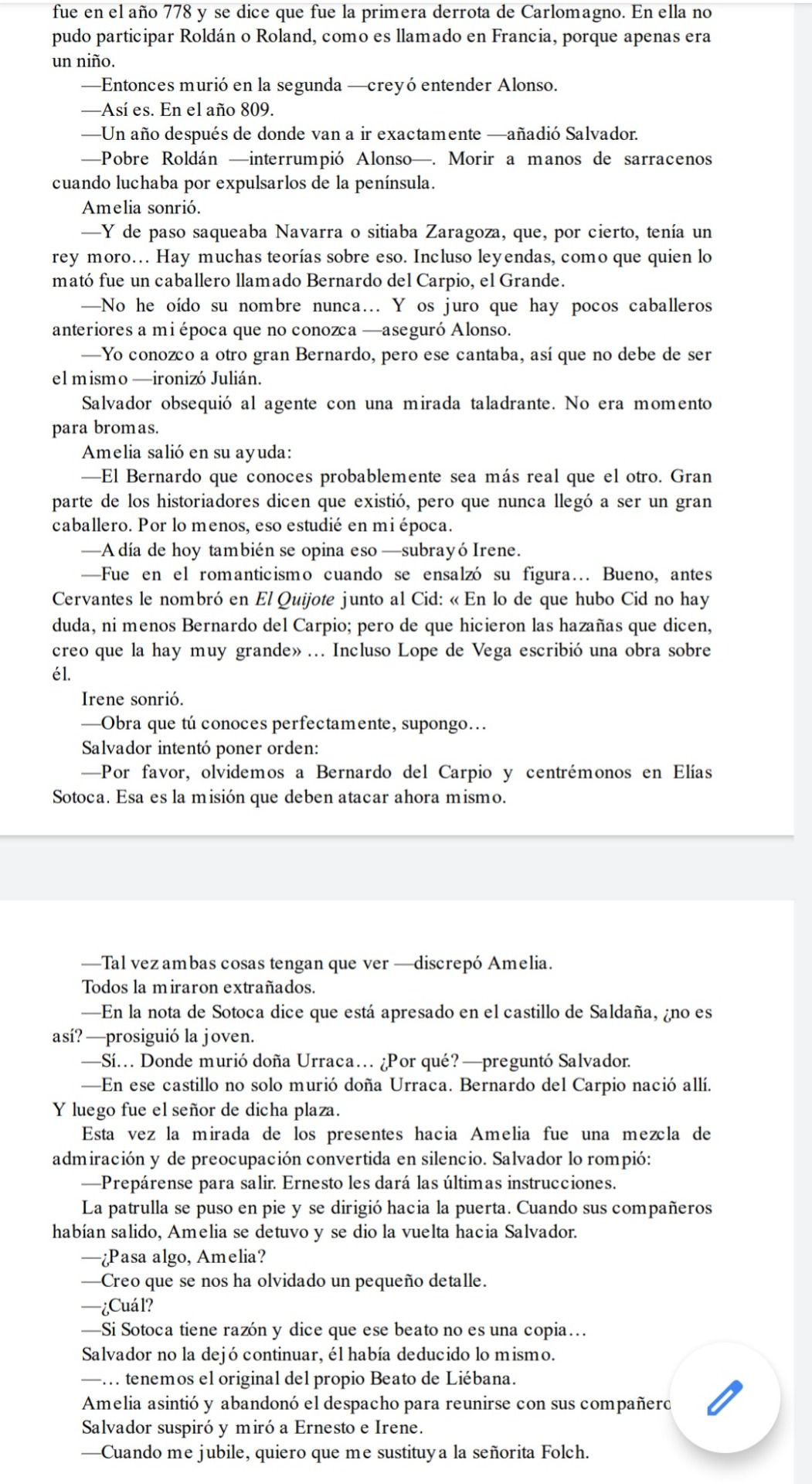

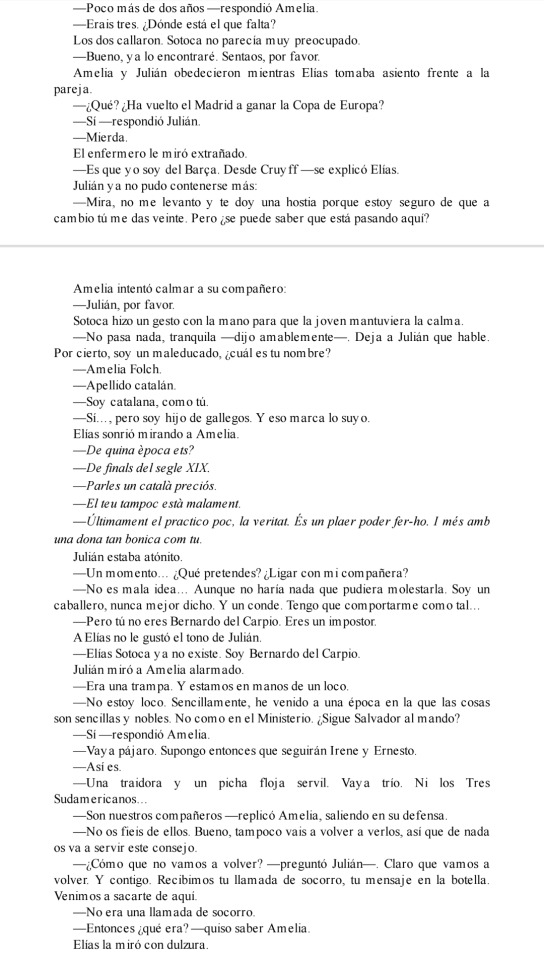
Las mocedades de Bernardo del Carpio, El casamiento en la muerte, Hechos de Bernardo del Carpio...
Si definitivamente Amelia se debe conocer de pe a pa la figura de Bernardo del Carpio solo con leer las obras que le dedicó Lope de Vega.
Principalmente porque Lope tenía gran interés en Bernardo por tener el el mismo apellido e incluso se llegó a plantear si tendría algún parentesco con el héroe, siendo el segundo apellido de Lope, Carpio, y en una de sus obras, La Arcadia aparece un grabado del atribuido escudo del Carpio, con 19 torres, bajo el retrato de Lope, principalmente después de su visita al Castillo del Carpio en Villagonzalo de Tormes (Salamanca)
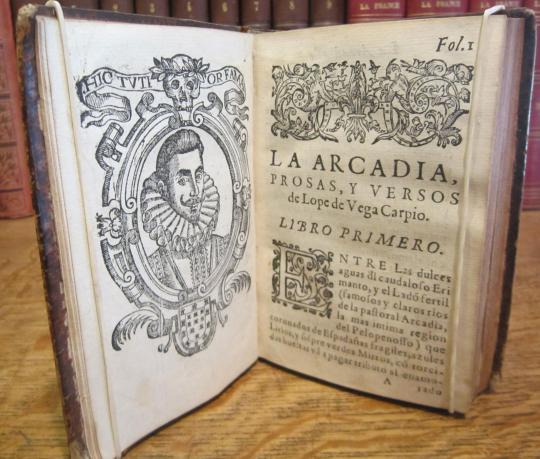
Aunque pronto otros autores de la época se burlaron del tema del escudo y de alegar ser pariente de Bernardo, como Góngora con este poema:
Por tu vida, Lopillo, que me borres
Las diez y nueve torres del escudo,
Porque, aunque todas son de viento, dudo
Que tengas viento para tantas torres
¡Válgame los de Arcadia!
¿No te corres armar de un pavés noble a un pastor rudo?
¡Oh tronco de Micol, Nabal barbudo!
¡Oh brazos Leganeses y Vinorres!
No le dejéis en el blasón almena.
Vuelva a su oficio, y al rocín alado
en el teatro sáquenle los reznos.
No fabrique más torres sobre arena,
Si no es que ya, segunda vez casado,
Nos quiere hacer torres los torreznos.
#random#lope de vega#bernardo del carpio#el tiempo es el que es#novela#emdt#Félix Lope de Vega y Carpio#hechos de bernardo del carpio#las mocedades de bernardo del carpio#el casamiento en la muerte#la arcadia#mdt#luis de góngora y argote#el ministerio del tiempo
4 notes
·
View notes
Text
Coco OC: Mateo Sánchez
•Full name•
Mateo Santiago Maldonado Sánchez
•Gender•
Male
•Inspiration•
Vicente Fernández
Javier Solís
Jose Alfredo Jiménez
•Other names•
Mat (Family)
•Sexual Orientation•
Heterosexual
•Appearance•
Slender, muscular, short brown hair, brown eyes, mustache, mariachi clothes, height 6'0 and tan skin(formerly).
•Personality•
Positive traits: Charming, intelligent, brave, serious, music-loving, flirtatious, optimistic, humble, strong-willed, independent, honest, loyal, talented, charismatic, insecure, kind-hearted, selfless, and ambitious(sometimes).
Negative traits: Sarcastic, insecure, self centered, and Arrogant.
•Occupation•
Musician(formerly), singer(formerly), songwriter(formerly) and actor(formerly).
•Date of Birth•
September 7th, 1935.
•Career•
1950-1996
•Alignment•
Neutral
•Goal•
-Becoming a famous Mexican musician (succeed)
-Keeping his father's legacy alive(succeed)
•Home•
Mexico city(formerly), Land of the dead.
•Pet•
None
•Family•
✞Ernesto de la Cruz (Father)
✞Monserrat Sánchez (Mother)
Charlotte Prado(Half sister)
Elvira Sánchez (Twin sister)
✞Joaquin Sanchez (Uncle)
✞Renata Montero(Aunt)
Esteban Sánchez (Cousin)
Camila Sánchez (Cousin)
Martín Sánchez (Cousin)
✞José Luis Sanchez (Uncle)
✞Teresa Torres (Aunt)
Marco Sanchez (Cousin)
Arturo Sánchez (Cousin)
✞Amelia Sánchez (Aunt)
✞Victor Ramirez (Uncle)
Rodrigo Ramírez (Cousin)
Estrella Ramírez (Cousin)
Sebastián Sánchez (Uncle)
✞Ximena Gutiérrez (Aunt)
Emiliano Sánchez (Cousin)
•Affiliation•
The Sanchez family
•Allies•
Sanchez family, Cantinflas, María Félix, Dolores del Río, Ernesto de la Cruz(formerly) and Rivera family.
•Enemies•
Ernesto de la Cruz
•Likes•
Family, wife, his passion for music, dancing, acting, writing his own songs, being partner with Elvira, respect, playing the guitar, inspiration, women, performing, romance, himself, flirting, parties, tacos, day of the dead, bread of the dead, truth, and Ernesto de la cruz(formerly),
•Dislikes•
The crimes of his father, his father, people looking at him in the same way as his father, crimes, lies, murder, ignorance, rumors, bullying, family in danger, have to carry his father's mistakes, her sister jokes, ice cream, break him mother's rules and disobedience.
•Weapons•
Guitar
•Skills•
-High intelligent
-Talented singer
-Charisma
-Dancer
-Singing
-Acting
•Fate•
Still alive
•Story•
Process..
6 notes
·
View notes
